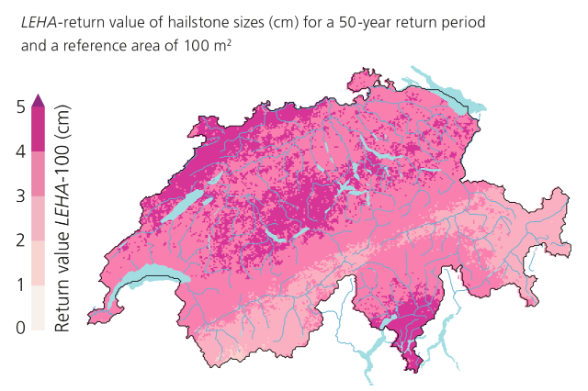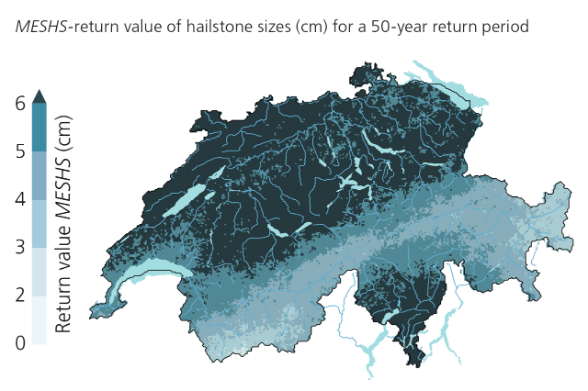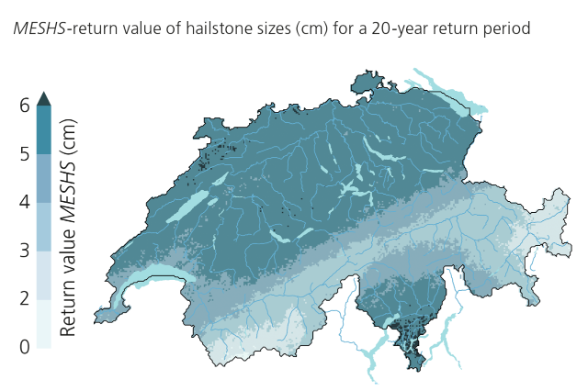In order to implement targeted measures against hail damage, it is important to know what hailstone sizes must be expected over a considered period of time – such as the service life of a building – and how often. The expected hailstone sizes for certain return periods allow the calculation of this probability.

Practical Example: Building Protection
Return values of hailstone sizes play an important role in building protection, among other sectors. On average, hailstorms in Switzerland cause damages to buildings amounting to 93 million Swiss Francs each year. To protect a building, materials and construction methods should reflect sufficient hail resistance. For the building protection hazard map, the return values of hailstone sizes for the 50-year return period were converted from MESHS to LEHA-100. The reference area of 100 square meters, selected with the input of the stakeholders involved, corresponds roughly to the floor area of a typical single-family house. According to the building protection hazard map, based on the 50-year return period, hailstone sizes of at least 3 cm must be expected on the reference surface of a house roof, although it cannot be ruled out that the maximum hailstone size within the square kilometer will exceed 6 cm. The building protection hazard map forms the basis for validating the specifications of the SIA’s building standards*. These standards set out the areas in which hail-resistant construction is necessary and define what measures are appropriate.
* Norm SIA 261/1 Einwirkungen auf Tragwerke - Ergänzende Festlegungen (2020).
Building Protection Hazard Map
50-Year Return Period
Interpretation Aid for the Return Periods
The new hazard maps present hailstone size as a function of the return period T. They describe the hailstone size that under today's climatic conditions will be exceeded with a probability of 1/T per year per radar pixel. For example, the map with the 20-year return values shows the hailstone size that will be statistically exceeded once every 20 years, or with a probability of 5 % per year: generally, 5 – 6 cm per square kilometer. At this spatial resolution, the hazard maps form the scientific basis for assessing the risk of hail in Switzerland. Due to the complexity of the weather phenomenon of hail, as well as the short data series, regionally rare occurrences, technical measurement inaccuracies, and statistical assumptions, the return values and especially the long return periods are subject to uncertainties that are generally in the range of plus/minus 0.5 to 1 cm*.
20-Year Return Period
* More detailed information can be found at the MeteoSwiss website and in the technical report:
According to your selection criteria, you will get a wealth of graphics here on the MeteoSwiss website, as well as further information on the methods and data.
The technical report describes the methods and findings of the project “Hail Climate Switzerland” in detail. It is intended for researchers and is available in English.
Last modification 11.05.2021











